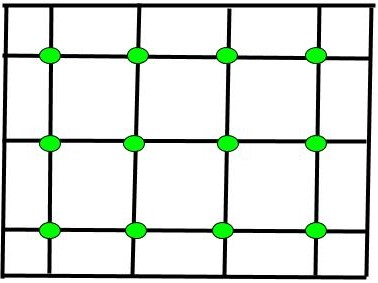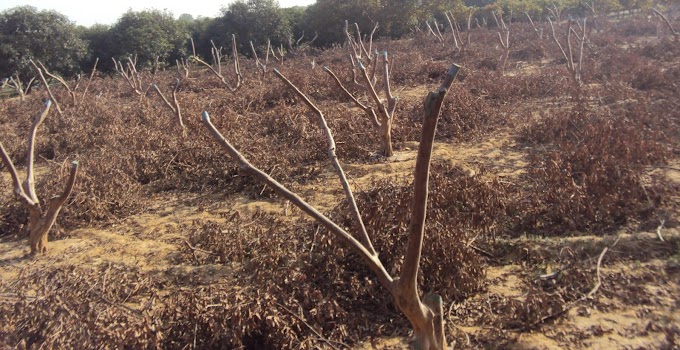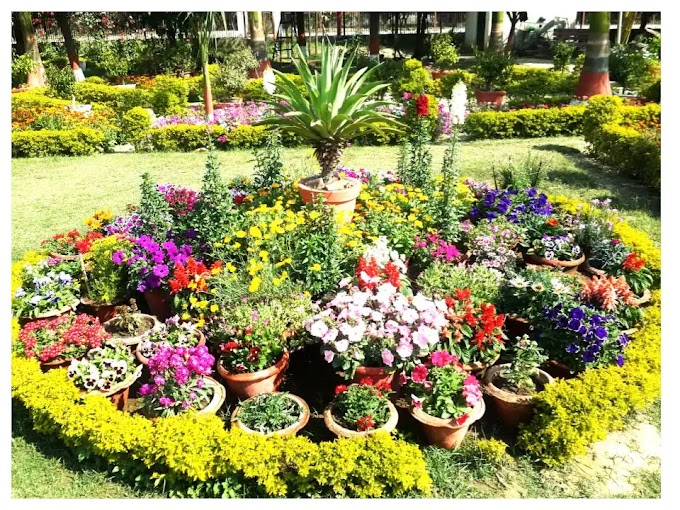Availability of quality planting material is of utmost
importance in citrus cultivation as non-availability of disease free planting
material of citrus has been the basic reason for such a low production, short
productive life and gradual decline of citrus trees. Citrus trees are propagated
by seed and by vegetative means. Vegetative propagation is preferred because it
ensures true to type plants, uniform quality, regular and early bearing etc. In
most areas, a citrus tree is produced by budding the desired scion variety
budded onto the chosen seedling rootstocks. Citrus plants are very sensitive to
various biotic and abiotic stresses. Therefore selection of an ideal rootstock
is a continuing challenge for the citrus industry of India. In process of bud
selection, it is required to ensure that clonal purity, good
physiological vigour and yield potential are maintained and bud material
should be free from transmissible diseases like viruses. Citrus is highly
susceptible to both biotic and a biotic stresses but virus and virus- like
pathogens are the main biotic agents responsible for poor
tree health and reduced yield. For growing healthy
citrus trees it is essential to have mandatory bud-wood certification
programme. Unless the orchards are planted with disease-free nursery stock,
none of the potential of the improved practices can be fully realized.
Therefore production of disease-free planting material should made mandatory
for bright and healthy future citrus industry of India. Various aspects starting
from selection of healthy and resistant root stock to the use of certified bud
wood are considered for raising healthy disease-free planting
material of citrus. The recent techniques adopted in production of disease
free planting material are briefed here.
Containerized Nursery System
In India most of the
cases citrus plants are raised as field nursery. In field nurseries, the
eradication of soil borne pathogens like Phytophthora once introduced becomes
very difficult. To avoid this problem, concept of containerized nursery system is
to be adopted. The infrastructure required for such nurseries includes shade
net houses (50 % shade), sterilized plastic trays, UV stabilized black polybags
(100 µ), UV stabilized transparent polythene for solarization, fumigation of
potting mixture and a separate set of nursery equipments.
Potting mixture
The potting mixture, consisting one part of fertile soil + sand + FYM (sterilized), should
be used in plastic trays for seed sowing in primary nursery. The same sterilized
mixture has to be used for filling the polybags which is be used in secondary
nursery.
Soil solarization
The potting mixture is first taken onto a concrete floor and
spread in the form of flat bed of 1.5’ thick layer. These beds were completely
drenched with water before covering it with 100 µ UV stabilized transparent
polythene sheets in summer months (April- May) when atmospheric temperature
goes up to 45 - 460C. The edges of polythene sheet should be
completely sealed with soil to avoid vapour loss, which allowed the inside
temperature to rise up to 540C. This process of soil
solarization completes within 4 - 6 weeks.
Soil fumigation
The solarized soil is further fumigated with Basamid (Dazomet)
granules, a soil fumigant, which releases methyl isocynide gas and thereby,
completely eliminates soil born fungi like Phytophthora spp., Pythium spp., Rhizoctonia spp. and Fusarium
spp. from the soil. Solarized and fumigated potting mixture was used to fill nursery
pro-trays for raising seedlings &poly-bags.
Steam sterilization
This is one of the quickest methods of potting mixture sterilization.
In this process steam are passed through potting mixture which kills all
pathogen and weeds. First mixture is filled in jeep trolly which has
nozzel in bottom of trolley. Then steam which is generated in boiler passed in this covered trolley for about 20
minute.
Selection of seed
Seed should be collected from healthy fruits of recommended rootstocks.
Only selected trees free from diseases are used as seed
source. Seeds are extracted from fully ripened fruits by making a shallow
cut through the rind round the centre of the fruit and twisting the two
halves of fruit apart. Seeds are then washed into cold water with rubbing in
ash to make free from pulp and dried under shade condition. The sound
seeds, being of greater density are separated from the underdeveloped seeds.
Seeds should be sown as early as possible after extraction, since citrus seeds
give the highest germination if planted immediately after extraction.
Raising of seedling in primary nursery
For raising disease- free nursery it is required to grow primary
nursery in tray. Plastic tray 60x40x12 cm size is preferably used for primary
nursery. After making 6 holes in bottom of trays to drain out excess
water, trays are filled with sterilized potting mixture and trays are
kept at 1.5 feet height from the ground on the bricks or on cement
platform to check the contamination. Seeds are sown at depth of 1- 1.5 cm with
spacing 2.5 to 3.0cm in the row and after sowing light shower irrigation
should be done with watercan.
Transplanting of seedling in secondary nursery
Seedling when 10 to15 cm tall having 8 to 10 leaves are
transplanted to black polythene bag of 12” to 6” size having 3-4 holes at the
bottom to drain out excess water. The polythene bags are filled with sterilized
potting mixture and arranged in shade net. To ensure uniform nucellar
seedlings, smaller or too taller ones at the time of transplanting should be discarded. Seedlings
from primary nursery from trays should be uprooted with fork carefully to minimize
root damage. The hook-necked bent or twisted taproot seedlings should be
avoided. Selected seedling should be treated with Ridomil (2.75 g/l) solution
before transplanting to check the contamination at the time of transplanting.
Selection of mother plants and budwood
Selection of mother plants for budwood is the most critical
parts of production of disease-free planting material. Mother plants
should be selected from authentic sources with known pedigree with regard to
health, vigour , regular bearing and high yield with good quality
fruit. Selected plants should be indexed against viruses and Greening bacterium
and only disease-free plants should be used as bud source. Such disease-free
plants should be marked and bud stick should be carefully taken to avoid
infection. Bud wood should be always taken from fairly well matured wood of
current season growth. Round twigs having longitudinal white streak on the
bark, swollen buds ready to grow should be selected. Bud wood should be kept in
moist sphagnum moss and gunny bag to avoid exposure desiccation.
Diagnosis of Viral diseases
Various virus detection tests can be performed for knowing the
disease status of mother plants.
·
Serological diagnosis: Serological indexing
was done in DAS-ELISA by using monoclonal (CTV) and polyclonal (CTV, RS,
mosaic) antibodies.
·
Bio-diagnosis: The biological indexing was
also performed simultaneously using indicator plants like acid lime for
tristeza, sweet orange for greening bacterium and mosaic virus, Etrong citron
for exocortis and sweet orange and Chenopodium
quinoa for ring spot etc. under insect proof controlled conditions.
Budding and maintenance of budlings
Budding is usually done when seedling stems are 3-3.5 in
diameter (about the diameter of a pencil). Budding can be done anytime on
suitable stock on which the bark is slipping and when suitable budwood is
available. Usually, the bark is slipping from April to November, depending on
location. The area to be budded should be pruned clean of thorns and twigs. The
preferred budding height is 9 inches above ground level following the ’T’
or shield budding method. The budded portion should be wrapped with 100
guage 1.2-1.8 cm wide polythene strips.
Plant protection measures
In citrus nurseries, Phytophthora diseases may appear any
time of plant growth through contaminated water, soil and even through nursery
workers and implements. Therefore a regular monitoring should be done for
Phytophthora infection. In case of infection, the infected/contaminated plants
should immediately uprooted and destroyed to keep the nursery totally free from
Phytophthora and other diseases. The nursery plants are sprayed with
Bavistin @ 1 g/lit water at monthly interval as a prophylactic measure and
spray Ridomil MZ 72 @ 2.75 g or Aliette @ 2.5 g/lit. Nursery implements should
be disinfected regularly with sodium hypochloride solution and at the entry of
nursery. The arrangement should be made to disinfect the shoe of workers and
visitors with copper sulphate and lime dust. Floor should be regularly sprayed
with copper fungicides and at the entrance of nursery. The insect pests and
mites in nursery should be managed with the regular application of recommended
insecticides.
Production of disease free citrus plants by shoot tip grafting
In vitro shoot tip grafting
(STG) is a miniature grafting which involves grafting a minute shoot tip
(0.1 to 0.3 mm) on two week old seedling rootstock performed under aseptic
conditions. It produces true to type, non juvenile disease free plants
unlike nucellar embryony in vitro or in vivo. This technique is a
prerequisite for cleaning the citrus cultivars or indigenous collections from
virus like diseases and greening bacteria,since absolutely there is no control
measure once the virus enters the plant system except shoot tip grafting (STG).
Standardized age, type of rootstocks, size and source of shoot tip and growth
regulator used influence the efficiency of grafting.
The highest percentage of successful grafts was obtained when seedling were
raised in NAA supplementation (0.5 mg/l) followed by BAP. The frequency and
successful graft was high if the root stock seedling were 15 days old. It indicates
that age of seedling also played an important role. Among the grafting height
above 2 cm showed less success.
Micro Budding
Micro budding is a miniature budding on young citrus root stocks
measuring 3 mm diameter in which the bud is inserted on the detopped root stock
in a wedge cut and immediately protected by covering with a micropipette tip.
After a week, micro buds are observed and then micro tips are removed after
their sprouting within 12-14 days. Micro budding facilitates faster propagation
with reduced cost. This has a tremendous scope in commercial propagation and
research. It reduces labour cost and maintenance during the commercial
propagation in low cost green house. It can be utilized in biological indexing
of virus, viroids, greening bacterium and other disease inoculation and
expression studies at much faster pace, enable year round multiplication and
shortens the nursery phase.
In-vitro regeneration of citrus Scions and rootstocks through Somatic embryogenesis
In citrus, nucellar embryony has been commercially exploited for
breeding and genetic studies. Nucellar embryos, like shoot tip are free of
virus and can be used for raising virus free clones, especially in citrus where
shoot tip culture has not been successful. Hence technology was developed at
NRCC for whole plant regeneration via somatic embryogenesis. Ovules
were excised from 8-10 weeks old fruits of Citrus
reticulata cv. Nagpur mandarin and C. limonia cv. Rangpur lime Brazilian and cultured in MS - medium
supplemented with various organic compounds. Cotyledonary embryoids obtained
were subcultured and MS medium supplemented with various growth regulators
kinetin in combination with IAA promoted plantlet formation.
In- vitro regeneration of Citrus Rootstocks
The
in vivo clonal propagation of plants
is an often difficult, expensive and season-specific . Tissue culture methods
offer an alternative means of vegetative propagation in short time, space and
throughout the year. Multiple shoots obtained at NRCC from mature axillary bud
explant / single node of mature trees (>10 years old) of Citrus limonia Osbeck cultivars Rangpur
lime Gonicoppal and Brazillian Rangpur lime, when cultured in MS medium
supplemented with BAP, kinetin and NAA. In vitro proliferated shoots rooted when
shoots were cultured on MS supplemented with IBA. Multiple shoots obtained in
modified MS media fortified with BA from the nodal explants of complete in vitro regenerated plants. Rooted
complete plantlets transferred to micro pots having sterilized soil mixture
with 60% survival. Hardened and acclimatized plants were transferred to the
green house & successfully survived in open condition.
Author- Prof. N.K. Mishra
Department of
Horticulture, College of Agriculture, G. B. Pant University of Agriculture and
Technology, Pantnagar-263 145 (US Nagar, Uttarakhand)








